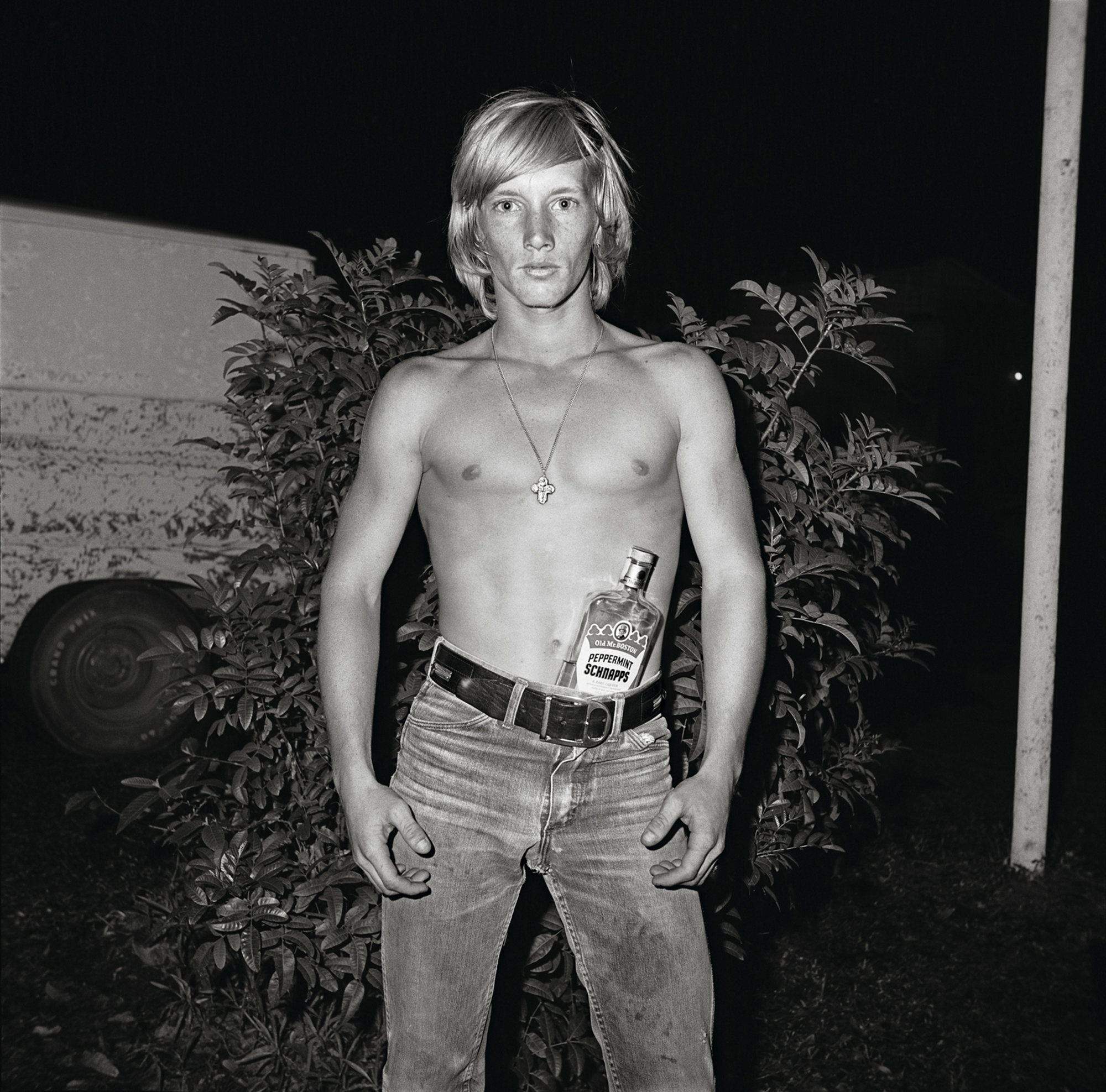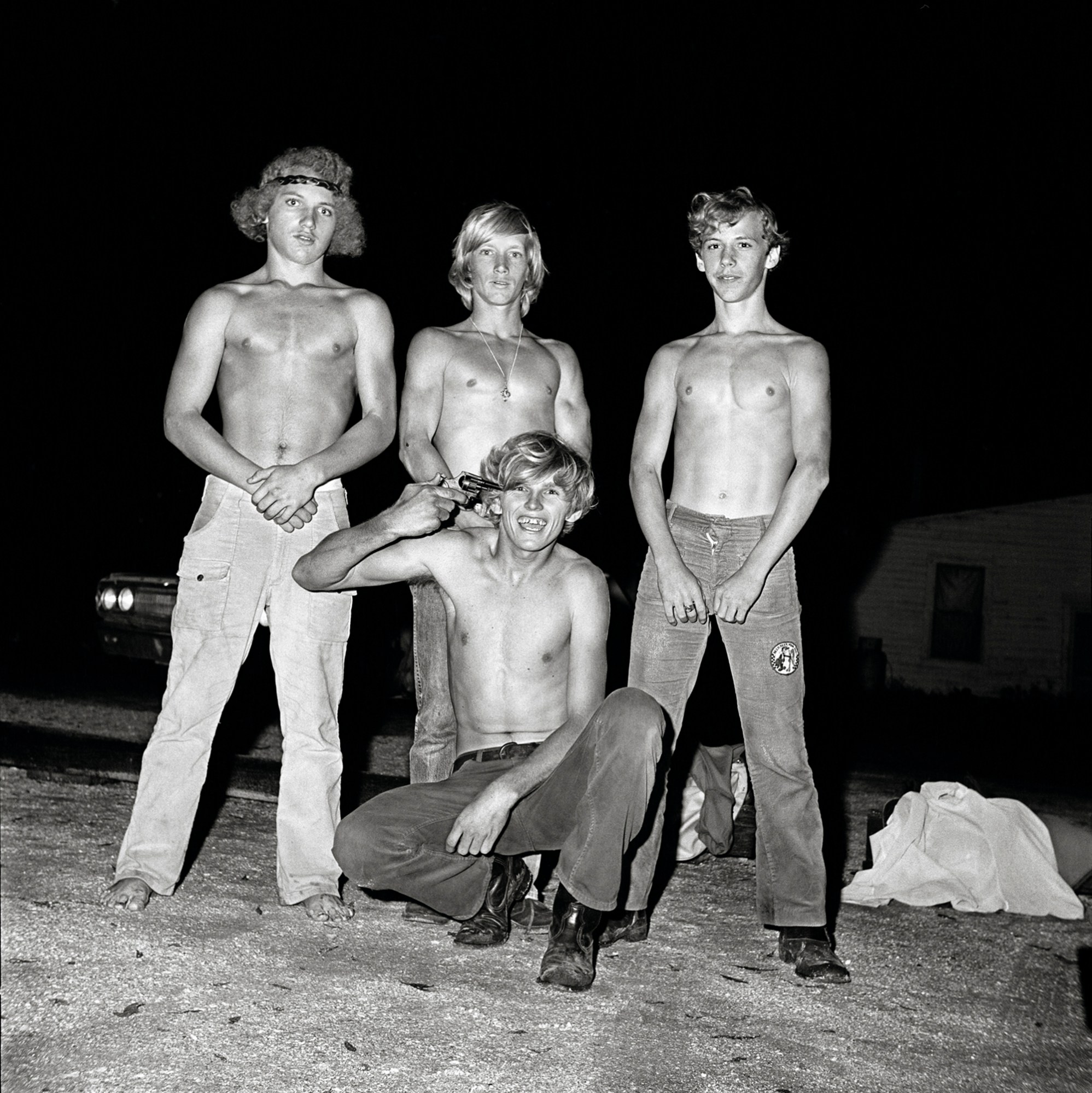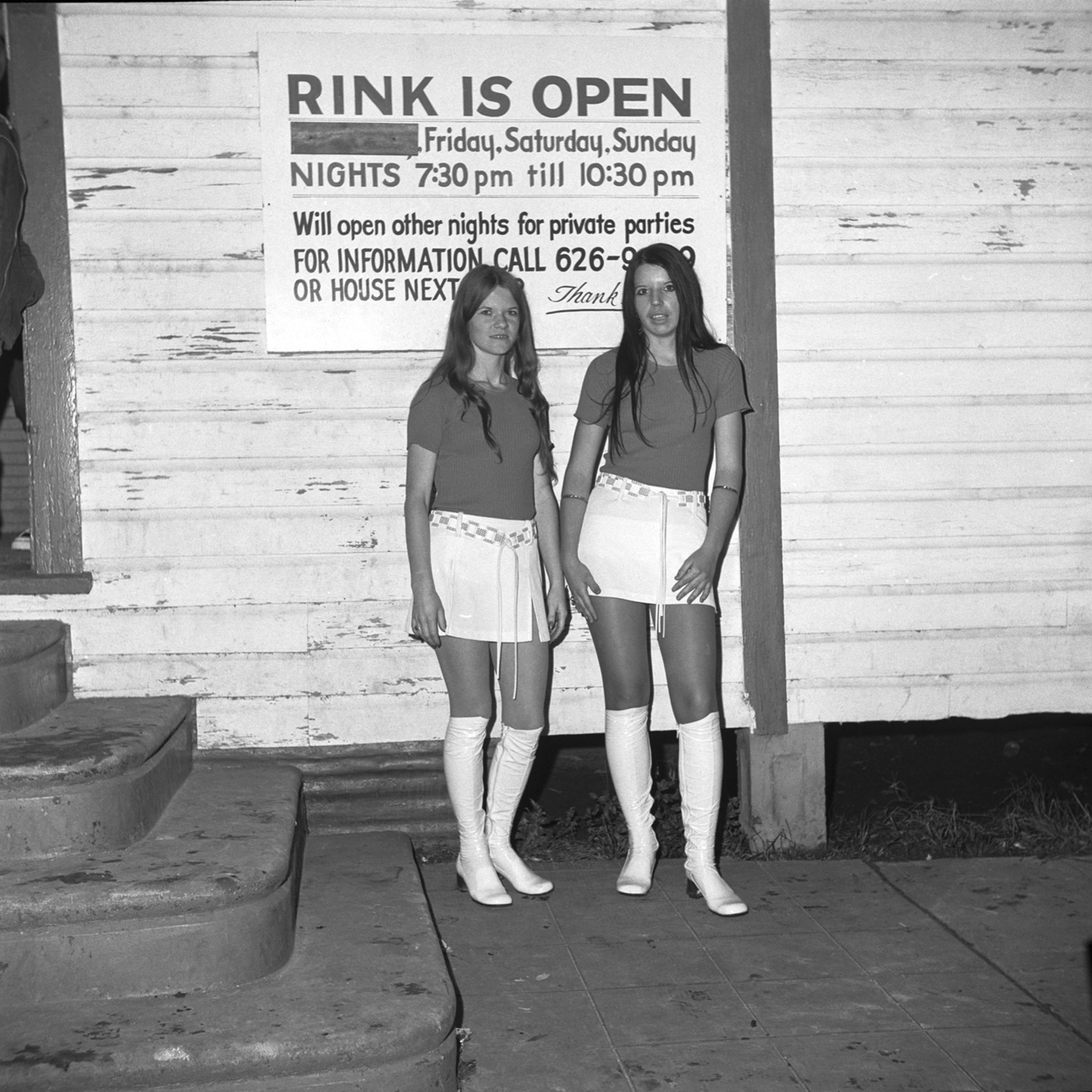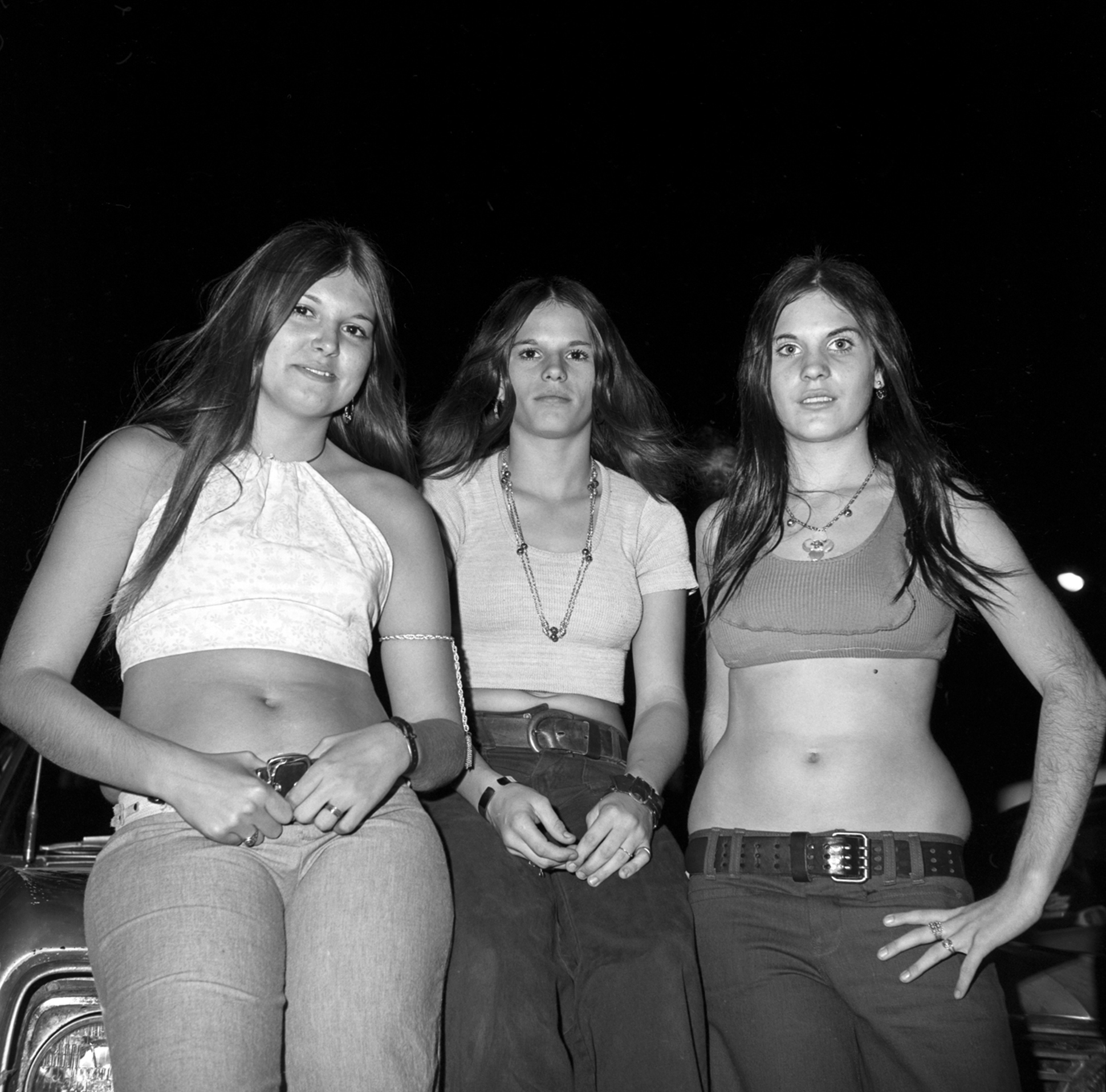Back in the fall of 1972, native Floridian Bill Yates ventured into the rural outskirts of Tampa, making his way through the deep backwaters of Six Mile Creek in Hillsborough County. Then a photography student at the nearby University of South Florida, Bill got in his car one day and hit the road in search of something that would capture his imagination. Driving down East Broadway, Bill spotted an old wooden structure built during the Depression that seemed completely out of character with the place and he pulled a U-turn to investigate. He rolled up in to the dirt and gravel parking surrounded by lush fields of strawberries and tomatoes, and approached the building, which bore a hand painted sign: Sweetheart Roller Rink.
At that very moment, the rink’s owner drove up from the other direction. Blessed with the gift of the gab combined with inimitable Southern charm, Bill struck up a conversation with the owner, who invited him to take a look inside. The rink was completely empty but Bill was intrigued. “Come on back tonight,” the owner said. “The place will be jumping.”
Bill went home for his gear and returned, not knowing what to expect, only to find himself in the middle of some kind of wonderland. The rink was filled with kids of all ages living their best lives, amidst the high-flying freedom that defined the times. Songs by The Beatles, Rod Stewart, and Florida’s own Allman Brothers filled the air, transforming the Sweetheart Roller Rink into their home away from home. “The kids grew up there,” Bill says. “They may have started at seven or eight years old, and continued going until they were 18 or 20. And they’d come back – it was always a place of refuge.”

Although Disney World had opened just one year earlier, Florida was still a hardscrabble state. The glitz and glamour of Miami Beach hadn’t made its way north, nor had the construction boom that transformed part of the tropical expanse into endless acres of pastel coloured, cookie cutter condos. “The centre of the state was just orange groves, vegetable farms, and pine trees that went on forever and ever,” Bill recalls.
Comfortable among people from all walks of life, Bill ingratiated himself into the scene, gaining their trust, and photographing them with aplomb — shooting eight rolls that very first weekend. The next weekend he returned with proof sheets from the photo session in tow, hung them on the walls, and watched as the kids came alive after seeing themselves captured like that.
“Photography at that time was going with the family to Kmart to get the Thanksgiving or Christmas card photograph,” he says. “Nobody had an instamatic camera. They might have had a wallet-size school picture and that was all. Their idea of photograph was in a magazine or newspaper. I became their newest best friend because now they saw themselves and what they looked like in their environment.”

The community embraced Bill, never questioning him or his intent, but simply taking pride and joy in the act of seeing and being seen. Some joyfully preened and posed, while others puffed up their chests, everyone fearlessly revealing aspects of their character without the weight of self-consciousness or charade of clout. Their blend of confidence and candour made for perfect photos every time.
Bill began visiting every weekend from late September 1972 through May 1973, amassing a singular collection of images now on view in his new exhibition, Sweetheart Roller Skating Rink. “I had just spent part of my summer doing a workshop with Garry Winogrand,” says Bill. “Shooting with him on the street gave me the balls to pick up a big heavy camera with a big ass flash and stick it in people’s faces. While Winogrand tried to be surreptitious to get the shots, it was that boldness of just: go out there, be there, and do it.”
Bill brought Winogrand’s Bronx moxie to his work, albeit with the consent — and camaraderie – of the people he photographed. But within these scenes of adolescent rebellion, pleasure and release lies something more: a portrait of people and place on the outskirts of town that peels back the deeper layers of the American South.

“A lot of the kids were sons and daughters of migrant workers and carnies for Ringling Brothers and Barnum & Bailey Circus who wintered in Sarasota and Brandenton — and they were intentionally racist as well,” says Bill. “Then you had a mix of Italian, Spanish and Cuban kids whose parents worked in the local cigar factories, who moved to Tampa after the 1898 Spanish-American War.”
Although Bill had no idea what he would do with the photographs, he did what mattered most: he showed up and made them. “I knew I had to keep going back because every night was something different and I never came back with the same photograph,” he says. “The only reason I quit going there is because I was graduating.”
And in that moment everything fell into place. Bill organised the photographs into a portfolio and applied to the Rhode Island School of Design, gaining entry to pursue his Masters with photo legends Harry Callahan and Aaron Siskind. He tucked the Sweetheart prints, negatives and contact sheets into a box, and moved on with his life.
In 2009, Bill returned to his archive and unearthed the work; a veritable time capsule of an era that has all but disappeared but for these photographs. While he has shown about 70 images from the series, there are hundreds that have gone unseen, and he’s now hard at work on a new volume from this magical era in American history.
“The people at the rink were free,” Bill says. “It wasn’t a rich life and it wasn’t an educated life, but it was their life and they revelled in it. And they were alive as hell.”
Bill Yates: Sweetheart Roller Skating Rink is on view until 4 November 2023 at Joseph Bellows in LaJolla, CA.





Credits
Imagery courtesy of Bill Yates


